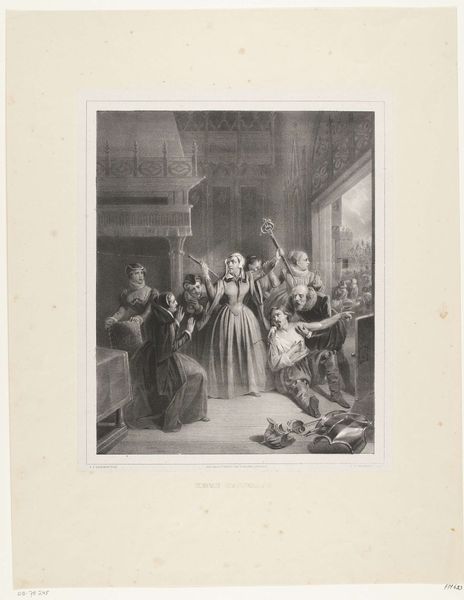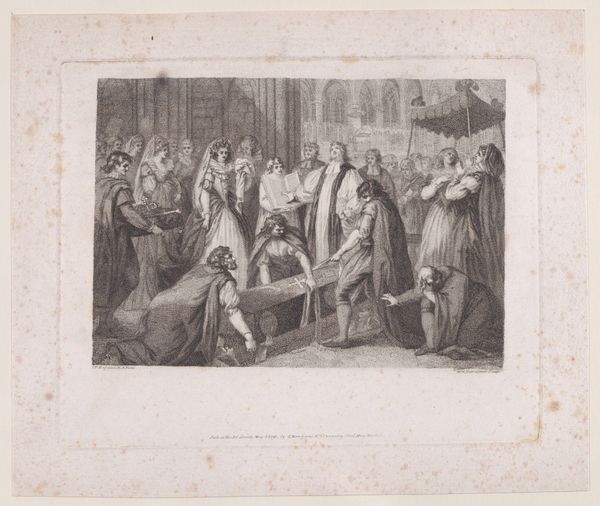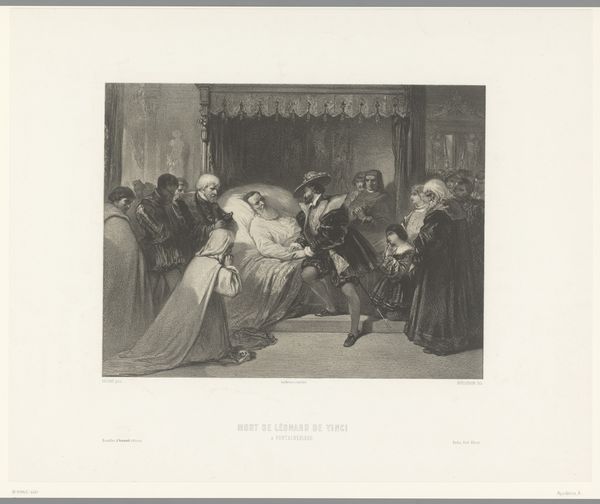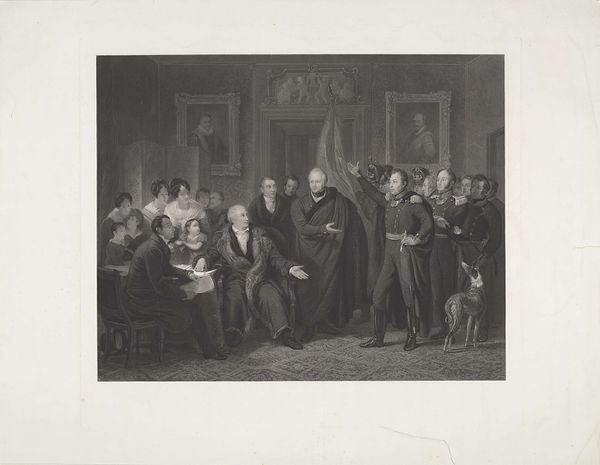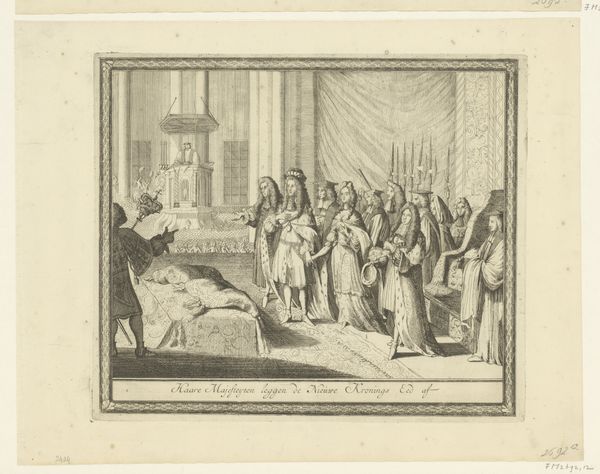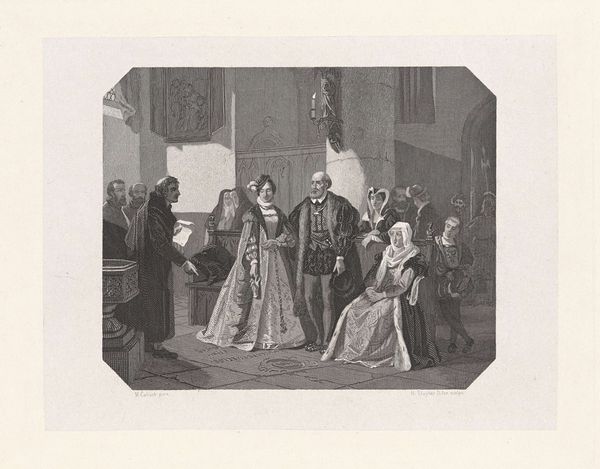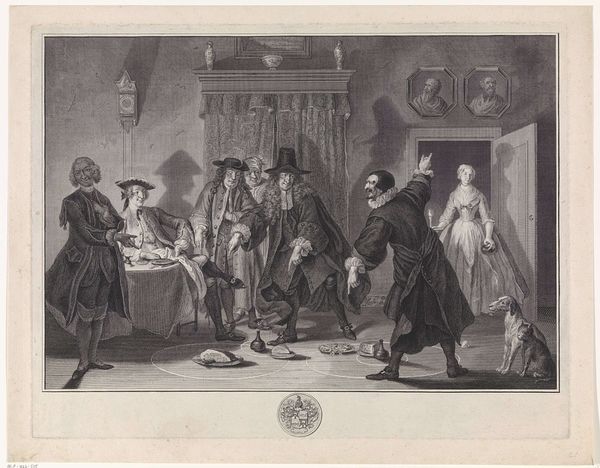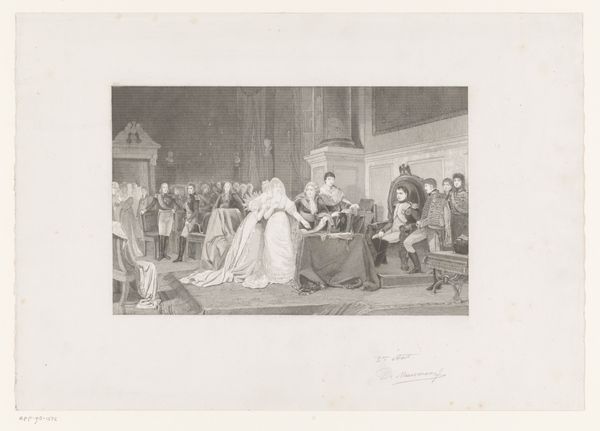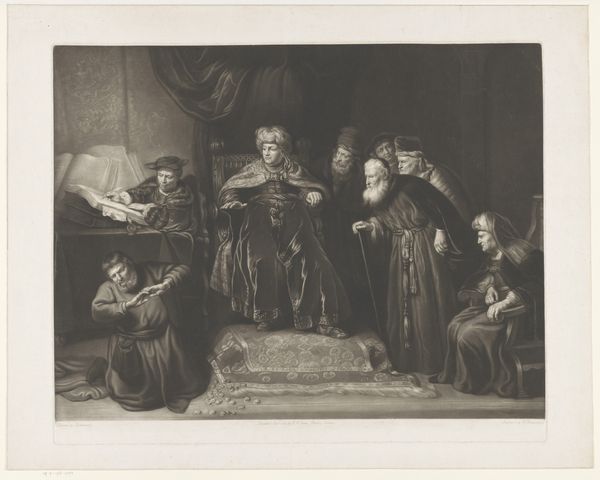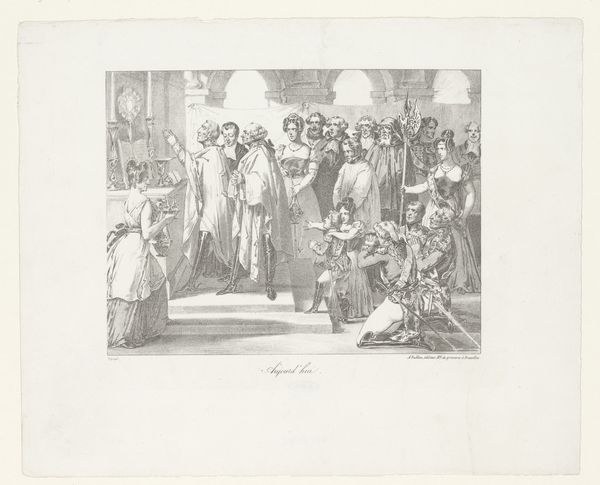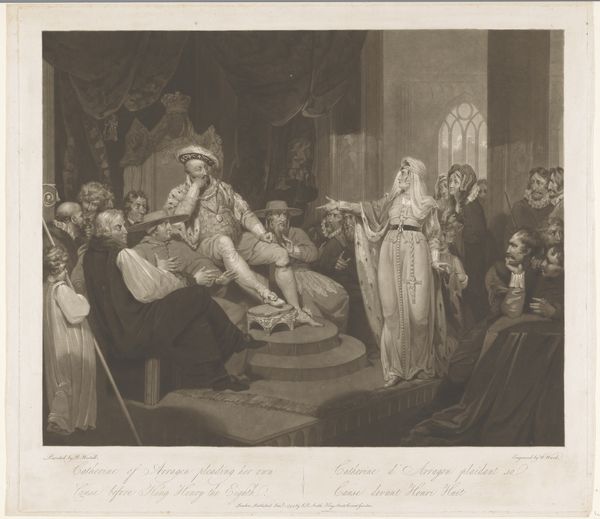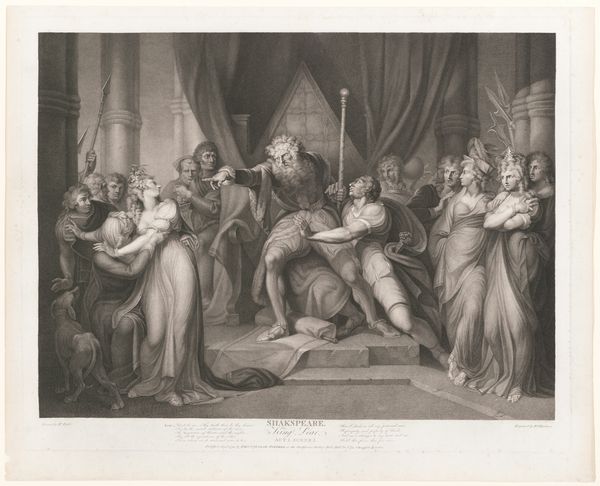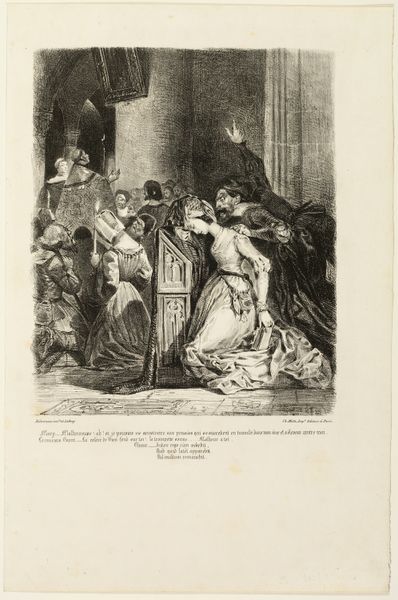
Willem van Holland laat zich als poorter inschrijven te Utrecht, 1249 1865 - 1870
0:00
0:00
print, engraving
#
medieval
#
narrative-art
# print
#
figuration
#
classicism
#
history-painting
#
academic-art
#
engraving
Dimensions: height 188 mm, width 240 mm
Copyright: Rijks Museum: Open Domain
Curator: Ah, this engraving presents a narrative ripe for analysis: "Willem van Holland laat zich als poorter inschrijven te Utrecht, 1249," created sometime between 1865 and 1870 by Willem (I) Steelink. The scene stages a specific moment in Dutch history. Editor: You know, right away I'm struck by this almost... dusty, formal vibe it gives off. So many watchful figures packed in there like witnesses, like history itself is holding its breath. Makes me feel like something important is happening, even if I don't know exactly what. Curator: Observe how Steelink orchestrates the composition. The focal point rests upon Willem's gesture as he interacts with the document—its textual elements essential to conveying the act of inscription. The surrounding figures, framed meticulously, offer layers of response and authority. Editor: It’s almost theatrical, isn't it? Like a stage tableau. And look at all that precise detail worked into a small engraving print; like a tiny epic being born. Still, all these neutral tones make the scene feel very reserved—are they always so solemn when new people join town? Curator: The monochromatic rendering, achieved through the rigorous engraving technique, aligns with academic art's stylistic leanings during the 19th century. The precision enhances the perception of historical accuracy. Furthermore, it invokes themes of governance and social stratification of that era. Editor: I keep wondering about the artist’s choice, though. To freeze this one event, what story was Steelink really trying to tell us, the viewers? Is this supposed to teach a lesson? Show off some regal fashion choices? Curator: It invites us to reflect upon power, legitimacy, and civic integration—significant themes deeply embedded within classicism, informing not only its style, but narrative aims. This particular moment echoes a medieval longing as constructed and rendered through classicist academic methodologies. Editor: Makes you ponder just how selective our view of history becomes, once it gets framed up nice and proper in artworks. So, in all its fineness, a past well staged for a very keen look. Thanks. Curator: Indeed. We witness art as a historical act rendered into symbol—an engagement made resonant.
Comments
No comments
Be the first to comment and join the conversation on the ultimate creative platform.
